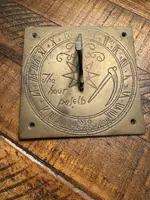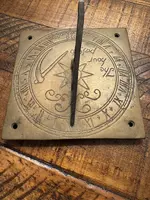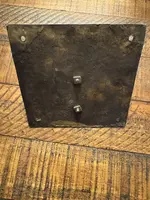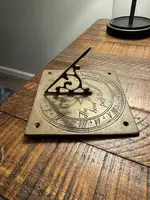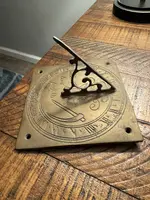Coleman
Tenderfoot
- Joined
- Nov 1, 2017
- Messages
- 7
- Reaction score
- 9
- Golden Thread
- 0
- Primary Interest:
- All Treasure Hunting
Going through some things at my grandparents house today and I found what I believe to be a brass sundial possibly dating to 1630.
It is a rough hand cut 6” square with hand etched Roman numbering around the perimeter. At the bottom I think it says long live King Charles and the date 1630. I believe King Charles was 1625-1649.
Is it possible this is genuine and really almost 400 years old? I appreciate any insight into this piece as there is very little about it online that I could find. One other example for sale on Etsy for $1100 but they weren’t sure about history or date either.
It is a rough hand cut 6” square with hand etched Roman numbering around the perimeter. At the bottom I think it says long live King Charles and the date 1630. I believe King Charles was 1625-1649.
Is it possible this is genuine and really almost 400 years old? I appreciate any insight into this piece as there is very little about it online that I could find. One other example for sale on Etsy for $1100 but they weren’t sure about history or date either.
Attachments
Last edited:
Upvote
5



